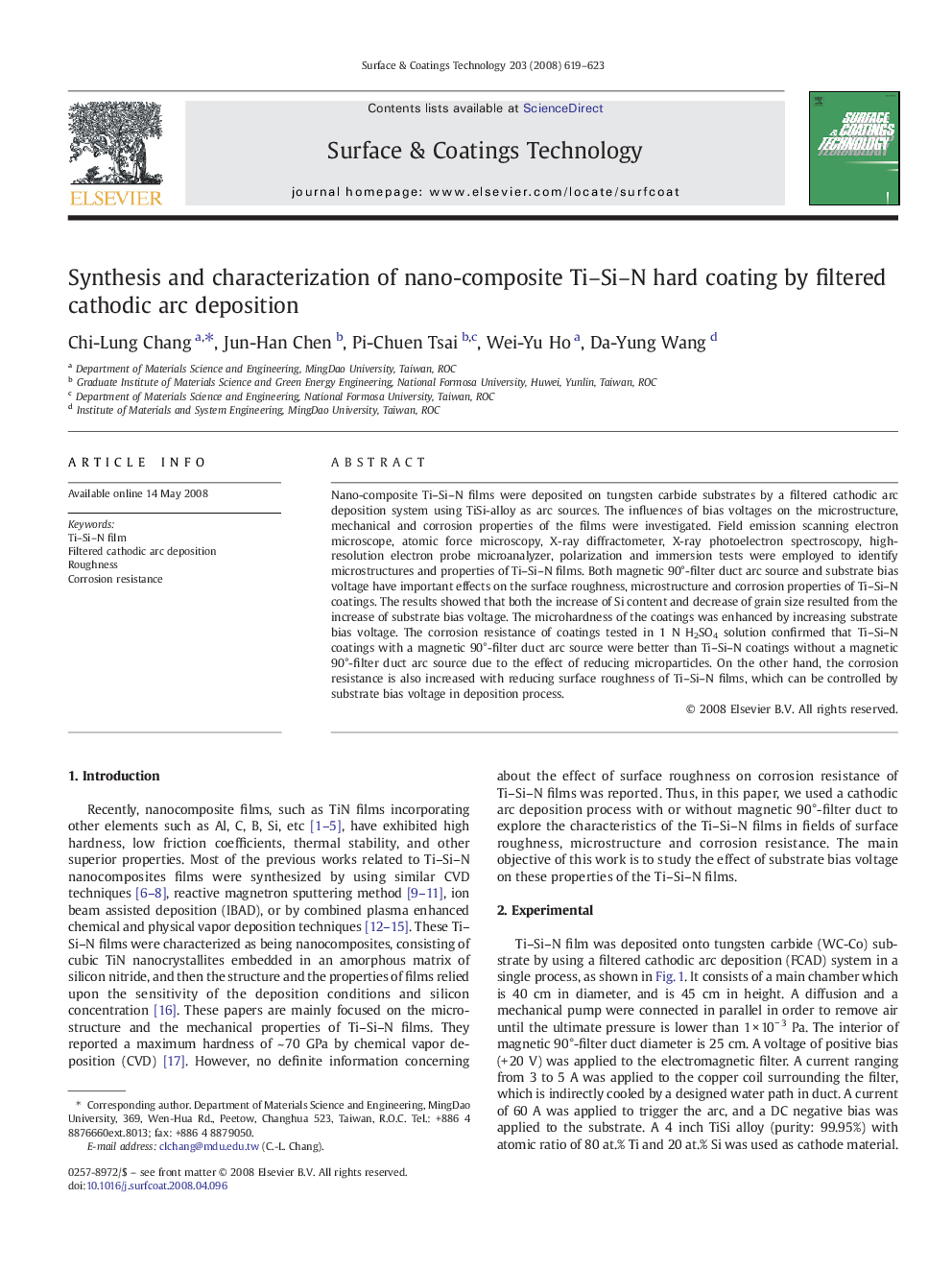| Article ID | Journal | Published Year | Pages | File Type |
|---|---|---|---|---|
| 1660010 | Surface and Coatings Technology | 2008 | 5 Pages |
Nano-composite Ti–Si–N films were deposited on tungsten carbide substrates by a filtered cathodic arc deposition system using TiSi-alloy as arc sources. The influences of bias voltages on the microstructure, mechanical and corrosion properties of the films were investigated. Field emission scanning electron microscope, atomic force microscopy, X-ray diffractometer, X-ray photoelectron spectroscopy, high-resolution electron probe microanalyzer, polarization and immersion tests were employed to identify microstructures and properties of Ti–Si–N films. Both magnetic 90°-filter duct arc source and substrate bias voltage have important effects on the surface roughness, microstructure and corrosion properties of Ti–Si–N coatings. The results showed that both the increase of Si content and decrease of grain size resulted from the increase of substrate bias voltage. The microhardness of the coatings was enhanced by increasing substrate bias voltage. The corrosion resistance of coatings tested in 1 N H2SO4 solution confirmed that Ti–Si–N coatings with a magnetic 90°-filter duct arc source were better than Ti–Si–N coatings without a magnetic 90°-filter duct arc source due to the effect of reducing microparticles. On the other hand, the corrosion resistance is also increased with reducing surface roughness of Ti–Si–N films, which can be controlled by substrate bias voltage in deposition process.
